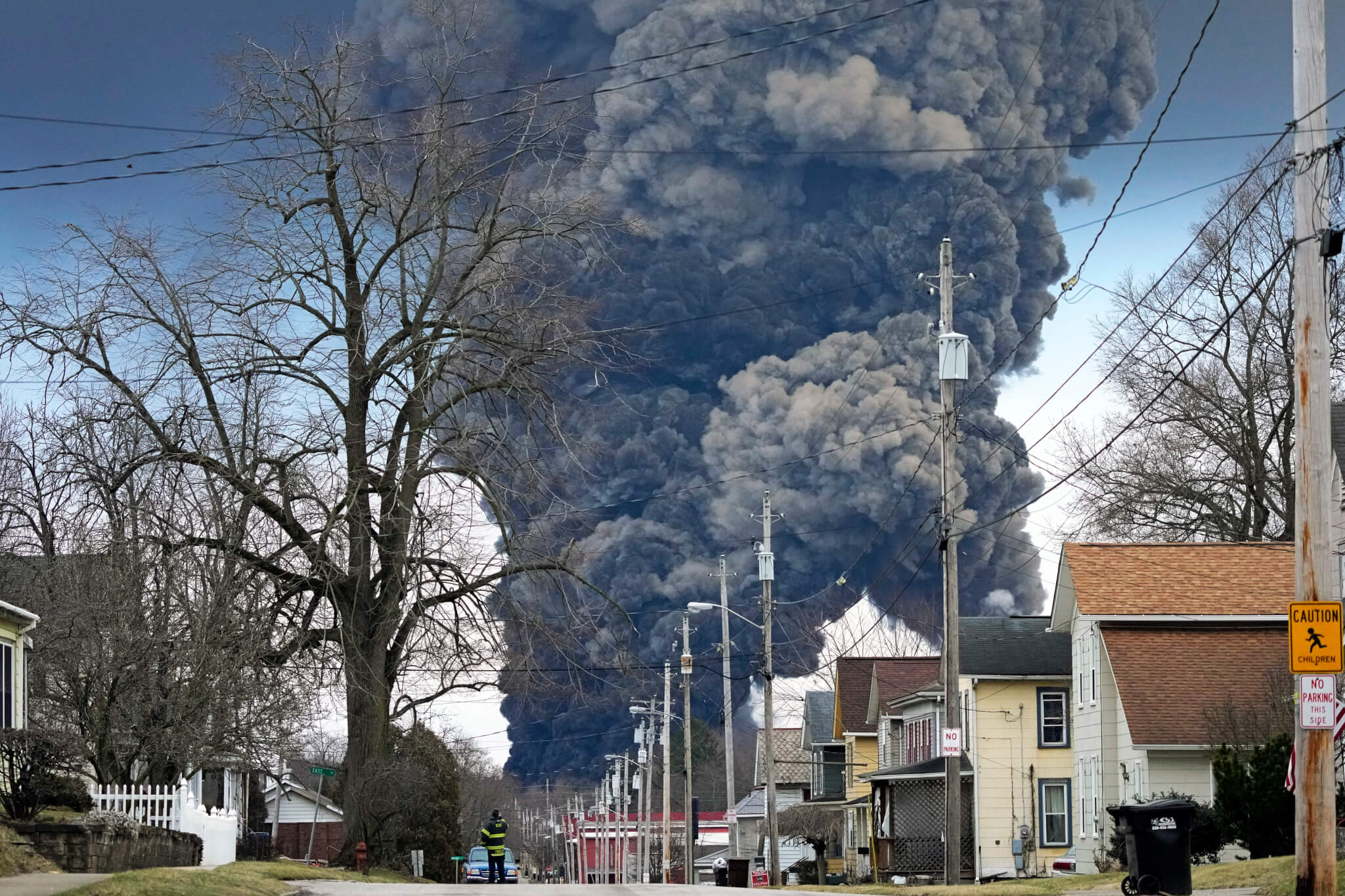
The Milky Way is seen clearly at Cherry Springs State Park in early October. (Photo by Will Parson/Chesapeake Bay Program)
Throughout the state, there are plenty of places to take in the majesty of the night sky.
Have you ever seen a shooting star, only to realize you’re looking at a bright and blinking satellite? The light pollution in urban areas makes it difficult to get a good view of the night sky. However, there are places in remote areas—even just outside our cities—where you can see thousands of stars.
In Pennsylvania, there is no better place to stargaze than Cherry Springs State Park, an International Dark Sky Park that attracts amateur astronomers from all over the country. But there are plenty of other places in the commonwealth to see the majesty of the night sky too, like other Pa. state parks and public observatories.
Check out our list to see where you can get a glimpse of the heavens in Pennsylvania!
Cherry Springs State Park, Coudersport
The best place to stargaze in Pennsylvania, hands down, is Cherry Springs State Park in Potter County. In fact, Cherry Springs is likely the best place to stargaze in the entire northeastern United States. This is because the state park is a certified International Dark Sky Park, meaning that it is an ideal place to escape light pollution and view the sea of stars that is typically hidden from city dwellers.
You can visit Cherry Springs and set up shop on your own to stargaze, or you can participate in a tour led by park staff. There are always free tours during which you can join a bevy of other park visitors in the park’s night sky public viewing area to learn about the constellations above, or you can pay to register for a private telescope “tour” for a personalized experience. Either way, you’re bound to be as mystified as early humans at the splendor of the sky.
Naylor Observatory, Lewisberry
In Lewisberry, just 20 minutes south of Harrisburg, the Astronomical Society of Harrisburg (ASH) regularly shares the skies with the community by regularly opening their observatory to the public. The Naylor Observatory is home to a number of large telescopes, all of which can be used during monthly public observing nights and which make viewing the stars easy. If you’ve never operated a giant telescope, it’s good to know that you’ll be assisted by helpful ASH members who know what to look for in the sky, whether that’s great views of the moon, other planets, star clusters, galaxies, or nebulae.
Check out the Astronomical Society’s website to see the schedule of upcoming public observing evenings.
State Parks Near the Allegheny National Forest
To see the night sky in northwestern Pa., you need to head away from the lights of Erie to the secluded woods of the Allegheny National Forest and surrounding areas. At Cook Forest State Park, just south of the national forest in Cooksburg, you may be able to catch sight of the Milky Way Galaxy—the hazy band of light that’s the visible portion of our galaxy. Cook Forest is a suitable location to feel like one has stepped back in time. It’s also home to an old-growth forest, undisturbed by human industry.
If you’re a beginner and want to learn more about stargazing before you try it on your own, nearby Chapman State Park, close to Clarendon, often hosts stargazing events led by park staff on the shore of the lake.
Pittsburgh Area Observatories
The Amateur Astronomers Association of Pittsburgh (AAAP) operates two observatories just outside the city limits that are open to the public for dark sky viewing during regular “star parties.”
The Mingo Creek Observatory, located in Finleyville, has two permanent telescopes it uses to share views of the night sky with the public. Members of the AAAP will also set up portable telescopes on the observatory lawn for visitors to use during star parties.
The Wagman Observatory in Tarentum is also host to two large, permanent telescopes, including one that was commissioned by Andrew Carnegie and others to view Halley’s Comet in 1910. This telescope, the Brashear 11-Inch Refractor, was built by Pittsburgher John Brashear in 1910 and restored by the AAAP in the 1980s. See it — and the sky of course — during Wagman’s public star parties.
Ryan Observatory, Holtwood
The Rittenhouse Astronomical Society, based in Greater Philadelphia, is one of the oldest amateur astronomy organizations in the country—it’s been spreading the wonder of the night sky since 1888. One way it currently does that is by hosting monthly, public stargazing nights at Ryan Observatory at Muddy Run Park in Holtwood, just south of Lancaster. These open houses combine stargazing and observatory tours with presentations both scientific and artistic. For instance, visitors might hear from Ryan Observatory’s own poet laureate!
Ohiopyle State Park, Ohiopyle
Remote areas are best for stargazing with the naked eye, and Ohiopyle State Park in southwestern Pa.’s Fayette County is no exception. While most people might visit Ohiopyle for rafting on the Youghiogheny River by day, the lack of light pollution in the Laurel Highlands allows visitors a spectacle of constellations by night. Book a campsite, camping cottage, or yurt within the state park so that you can watch the stars all night long.
Fels Planetarium at the Franklin Institute, Philadelphia
You can always head indoors to take a look at what the stars would look like within the city of Philadelphia thanks to the technology at the Franklin Institute. While you won’t usually be able to see many stars in the night sky in Philly—the city is much too bright—you can visit the Fels Planetarium at the Franklin Institute to see exactly what the sky above looks like during the planetarium show “The Sky Tonight.”
Politics

Opinion: Is Reproductive Healthcare just a women’s issue?
In this op-ed, Pennsylvania resident Lynn Strauss discusses the Republican Party’s conflicting stance on reproductive healthcare policy and the...

2 top US gun parts makers agree to temporarily halt sales in Pennsylvania
Philadelphia filed suit against Polymer80 and JSD Supply last year, accusing the manufacturers of perpetuating gun violence by manufacturing ghost...

It’s official: Your boss has to give you time off to recover from childbirth or get an abortion
Originally published by The 19th In what could be a groundbreaking shift in American workplaces, most employees across the country will now have...
Local News

Conjoined twins from Berks County die at age 62
Conjoined twins Lori and George Schappell, who pursued separate careers, interests and relationships during lives that defied medical expectations,...

Railroad agrees to $600 million settlement for fiery Ohio derailment, residents fear it’s not enough
Norfolk Southern has agreed to pay $600 million in a class-action lawsuit settlement for a fiery train derailment in February 2023 in eastern Ohio,...






